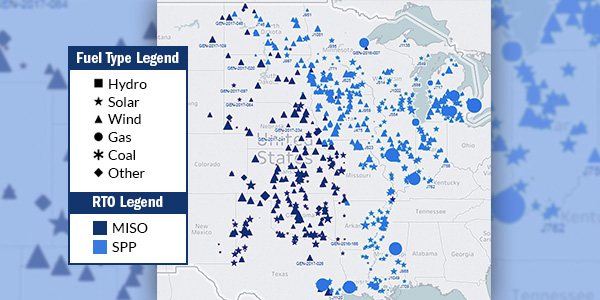By Amanda Durish Cook
MISO and SPP could jointly create a smaller category of interregional transmission projects as early as next year to address costly congestion, the RTOs said Tuesday.
But the RTOs have not reached any decisions on the issue and will spend at least part of next year evaluating the effectiveness of a smaller project type to address historical market-to-market congestion, according to RTO staff speaking at an Oct. 23 MISO-SPP joint stakeholder meeting.
MISO Planning Adviser Davey Lopez said the projects could be any voltage and include tie-lines and interconnections or transmission projects wholly contained within the footprint of either RTO.
MISO said potential criteria could limit project costs to less than $20 million and require an in-service date of within four years of approval. The RTO is also suggesting that projects must pay for themselves within four years based on congestion savings. MISO is proposing to measure a project’s future congestion relief benefit against two years of historical congestion prior to the project study.
The criteria closely resemble those of MISO-PJM targeted market efficiency projects (TMEPs), created in 2017, which must cost less than $20 million, cover their costs within four years of service and be in service by the third summer peak from approval.
The RTOs cite high-priced congestion on market-to-market flowgates as the reason for creating a new smaller project type. Lopez said SPP’s Riverton-Neosho-Blackberry flowgate in Missouri may be ripe for such a project after costing MISO $18 million in congestion in 2017 and $9 million so far this year. Its congestion has been chronically expensive since the RTOs created it in 2017. (See “MISO M2M Payments to SPP Exceed $50M,” SPP Seams Steering Committee Briefs: May 2, 2018.)
“We’re getting close to $30 million on that particular flowgate in the last few years,” Lopez said.
He said new, smaller projects aimed at congestion relief are needed because the RTOs’ longer-term transmission planning process misses quicker transmission upgrade solutions.
But some stakeholders said congestion could be better solved by administrative means between the two RTOs rather than transmission buildout.
Lopez promised a “deeper dive” into the causes of congestion as part of the exploration into the project type. “As part of the process, it will cause MISO and SPP to look into the causes of congestion and if it will persist,” he said.
Early this year, Entergy argued that the MISO-SPP seam does not yet have a structured enough coordination process to develop smaller interregional projects. (See “Entergy Critical of MISO-SPP TMEP,” MISO, SPP Look to Ease Interregional Project Criteria.)
Other stakeholders called for more than two years of congestion data to justify creating a new project type, and staff from both RTOs said they will continue to collect flowgate data. Lopez said MISO plans to investigate individual flowgates and speak with transmission owners about the causes of congestion, much like it did in this year’s round of TMEPs.
MISO and PJM have so far recommended seven TMEPs, five of which received approval in 2017, with the other two up for approval this year. The projects are expected to cost under $25 million and reap about $132 million in benefits. (See MISO, PJM Endorsing 2 TMEPs for Year-end Approval.)
But some stakeholders contend that at least some of the market-to-market congestion issues can be traced to the RTOs’ separate interconnection procedures that don’t fully study how new generation projects will affect flowgates before granting grid access.
Stakeholders have called for increased coordination in generator interconnection procedures, but the RTOs say they already study for impacts on each other’s systems and facilities in their affected-system study process and that interconnection staff currently meet face-to-face twice a year and hold monthly conference calls.





